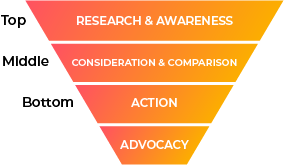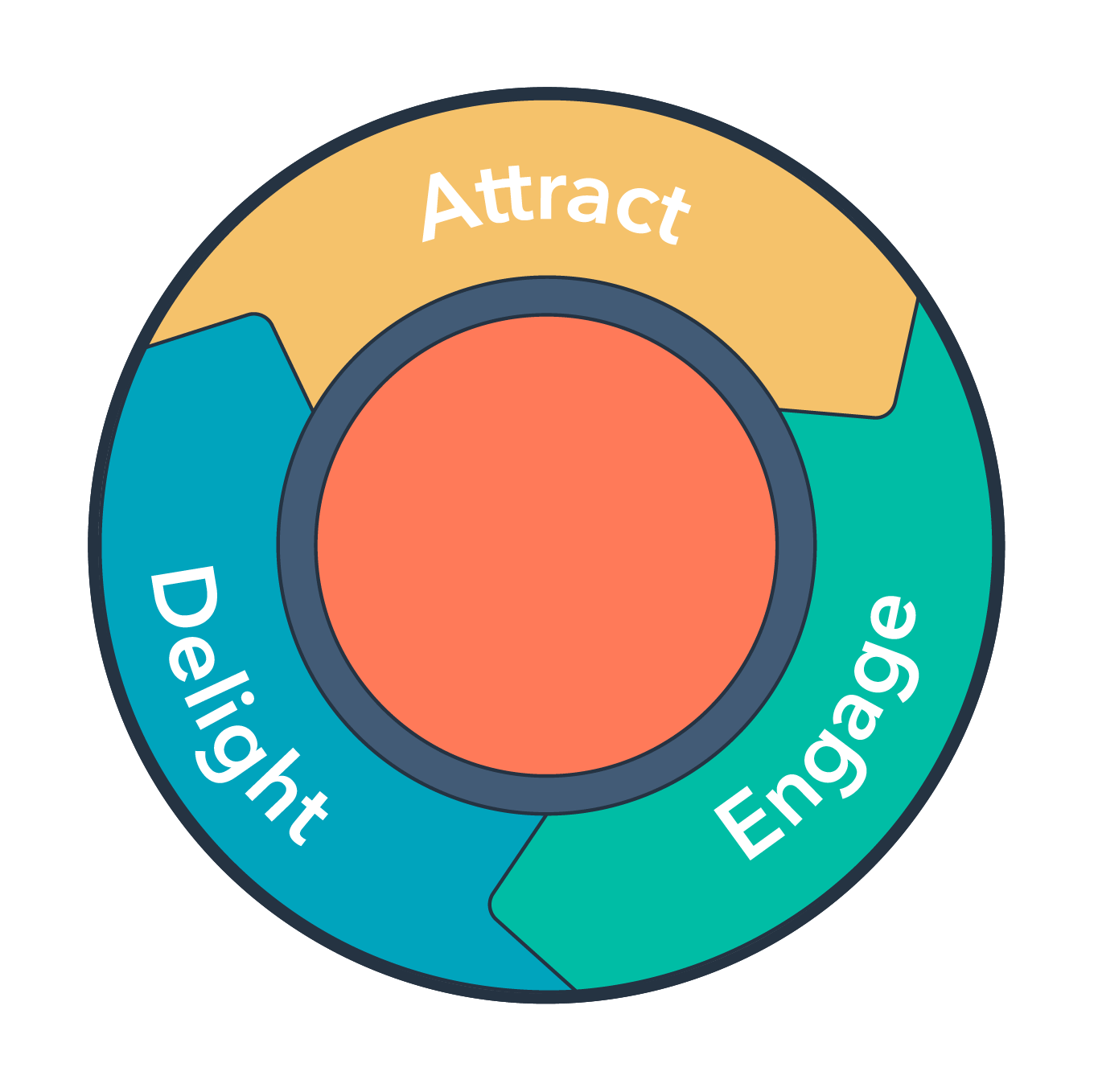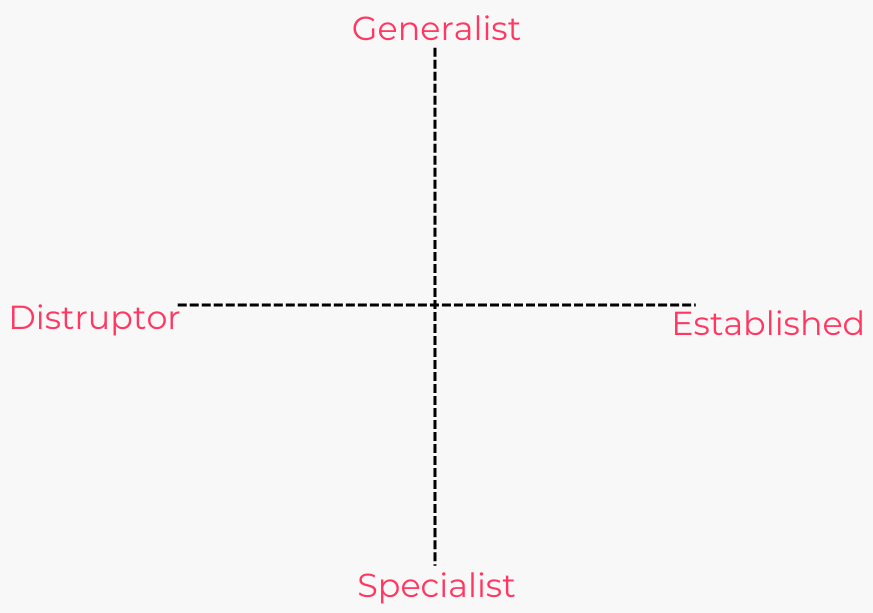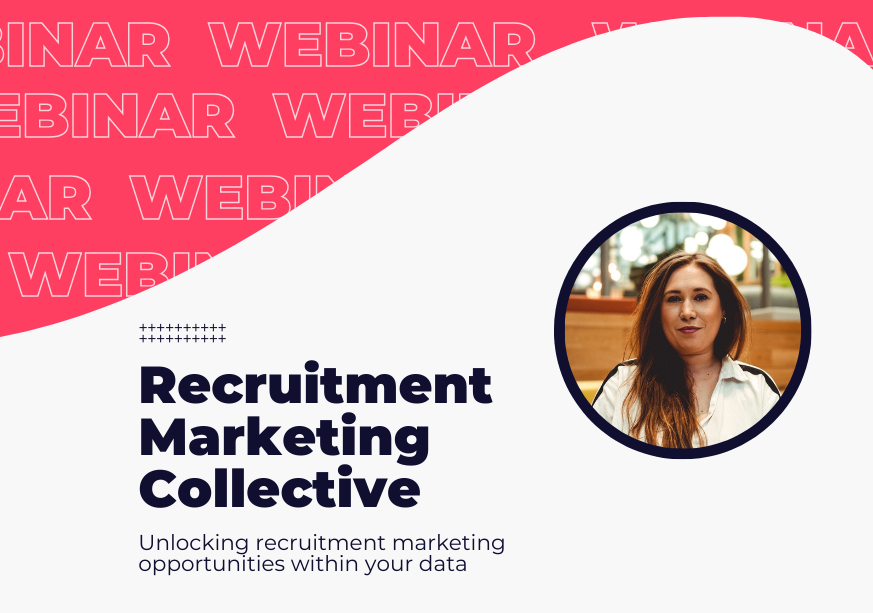Explore our NEW Knowledge Base and Help Desk to find everything you need to attract, engage and convert talent with your Vennture website.
Discover MoreRecruitment Marketing 101: Advertising vs Content Marketing
18 Jul, 20224 minutes
Many recruitment agencies today are keen to invest in job advertising and rely heavily on driving leads into the business without much thought to how their content can convince and convert customers. For years recruitment agencies have remained present on job boards to stay competitive, but with prices rising, many brands are looking for alternative ways to stay top of mind and see a return from their marketing.
A traditional outbound talent acquisition and lead generation approach may result in awareness, but is advertising alone enough to convert passive and active talent?
Our experts always refer to the funnel approach when discussing recruitment marketing strategy. This theory involves driving more candidates and clients to the top of the funnel, then nurturing customers to conversion with on and off-page content, using a careful combination of advertising and content marketing to push customers towards conversion.

A marketing strategy is never one size fits all, but understanding the role of content marketing vs advertising will help strengthen your marketing and result in better ROI.
Inbound vs outbound marketing.
Recruitment marketing can be broadly split into two types, inbound and outbound. Traditionally recruitment is quick to adopt outbound lead generation strategies, but we're here to look at how combining that with inbound content marketing can lead to success.
The Inbound Marketing Approach.
Inbound marketing refers to activities in the middle of the funnel, primarily content creation. Content marketing puts your brand in front of potential customers and nurtures passive talent by adding value, so your brand is top of mind when the need arises.
Inbound strategies build brand awareness and create connections between your audience and your brand. Unlike outbound marketing, which involves tactically targeting people away from your website, inbound approaches utilise content to solve your audience's problems. Inbound marketing is a form of a long-term strategy that considers how you can convince users they are in the right place, driving them towards an action.
Fans of Hubspot will be well educated on the inbound approach and understand the three ways an inbound methodology can be utilised.
Attract
Use content that holds value for your target audience to establish yourself as a trusted source, encouraging people to start a conversation with you.
Engage
Be aware of your audience and their pain points. Then, use this to create content that matters to them, providing a solution to their problems.
Delight
Offer ongoing support for your customers even after the purchase. Your success is their success, so ensure your customer service is helping them to achieve their business goals.

Inbound strategies allow you to create a more engaging approach, delivering MQLs for your sales team. In addition, inbound marketing considers who your customers are to produce tailored persona-based content, qualifying the leads.
Outbound Marketing
An outbound strategy focuses on awareness, putting money behind advertising to attract candidates and clients at the top of the funnel. Outbound marketing includes activities such as:
- Advertising on job boards
- Newspaper advertising
- Cold calling
- Events/ Trade Shows
- Direct mail
Advertising relies on an immediate need, so for a recruitment agency, that includes unhappy people who are already looking for a job.
From e-shots to job ads and job boards, outbound recruitment marketing has long been the main activity for agencies. However, it can be costly and only achieves awareness when used alone.
What does a good recruitment marketing strategy look like?
The optimal recruitment marketing strategy will utilise both inbound content marketing and outbound paid media for an optimised customer journey online. Using the funnel approach, your brand should be gaining awareness at the top whilst providing engaging content for users further down the funnel, ultimately driving conversions through the website.
Using a content-driven approach, brands can drive more relevant traffic to their website with SEO practices. Then with a deep understanding of who their customers are, marketers can build enhanced paid media strategies that promote the content, using tailored messaging and clever conversion points.
Putting this into practice, for the recruitment industry, we see massive success for our clients who harness a great content strategy that gets conversations going. This content marketing, coupled with a strong communications plan, allows brands to reach a wider audience.
Understanding who your target candidates and clients are.
If you haven't got your messaging right, you've fallen at the first hurdle.
Segmenting your target candidates and clients helps you understand their pain points and gives insight into where they hang out online. This will inform your PPC activities, ensuring you get your ads in front of the right people at the right time.
Three things you should consider when building your audience personas:
- Are they actively searching on Google? If so, what terms are they searching for?
- Do they hang out on social media, and if so, which channels do they use?
- What are their pain points, and how can these themes inform your content?
Download our Guide to User Personas in Recruitment Marketing.
The role of content marketing in recruitment.
Content underpins everything in some way, shape or form. Compelling copy supports your social strategy and email campaigns and lets your audience know they are in the right place. For passive candidates, content is incredibly valuable. They may not actively be looking for a role, but with the proper engagement, agencies can build talent pools and brand advocates for the future.
Optimised content is also crucial for the search visibility of your brand and website. Only quality content written with your keyword research in mind will help you rank online. A brand name and a logo will not win you business on its own.
It's up to you and the content you share to convince users they are in the right place and that your brand can be trusted. Your content should connect with your audience and address trending topics related to their pain points. Working closely with your consultants will give you the insight needed to create an engaging blog strategy that can elevate your brand.
When marketing aligns with sales in this way, you get the inside scoop into your customers' world, triggers, and characteristics. This information will help you build out your audience personas, which are the basis of all recruitment marketing activities. You have to be aligned with the people on the front lines talking to your customers, be that clients or candidates. At the end of the day, they are all 'Customers', and different customers require different content.
Don't underestimate the power of a well-written job advert.
Before forking out for Google ads and LinkedIn campaigns, take a second to audit what you're currently sharing online and how your content is affecting the candidate's journey. For example, job descriptions are a common weak spot in talent acquisition strategies. Unfortunately, it's often the case that a consultant is quickly asked to knock together a job description with little to no knowledge of best practices for SEO and Google for Jobs.
Poor job descriptions won't attract quality candidates and can do a disservice to the client. Creating an engaging candidate experience starts with good content that resonates with passive and active individuals.
Well-performing job descriptions are:
Convincing
This is your time to be creative. Like any piece of content, a job description should always read well and inspire the reader to act. So, when writing job ads, make them exciting and concise. Beyond the facts, what will make someone apply for this job?
Informative
The quality is in the detail. Make sure your titles are concise and clear, and your main body descriptions provide readers with all the information they need to make a decision. Your job description should include:
- Information about the company
- Office location
- The role and responsibilities
- Required skills and preferred skills
- Required education and experience
- Working hours, salary and benefits
SEO optimised
A job description that is easy to read will already be of higher quality in the eyes of Google, so if you've followed the guidance above, you're already halfway there. Here are some more tips to help your job descriptions rank:
- Ensure your title is accurate and not an acronym or a non-universal term.
- Keep your keywords in mind and use semantic keywords in the main body.
- Make your copy visually pleasing with no large blocks of text.
- Bullet point key bits of information to make your job description scannable and digestible to the reader and Google.
Things to think about before you advertise.
Often seen as an instant fix, advertising is a powerful tool at your disposal if done correctly. However, for a campaign to succeed, it must consider the following factors.
Audience personas.
Start by asking, who is this advert for? Simply saying 'A candidate' or 'A client' is not enough. You need to drill down into their characteristics, work experience, demographic and what matters to them. Only then will you be able to target your messaging, CTA and destination to get the results you're looking for.
The conversion journey of your user.
Outside of eCommerce, it's rarely the case that advertising alone will result in a conversion. However, with little to no content being exchanged, advertising alone will boost awareness and struggle to prompt action.
In eCommerce, there are two types of purchases; an Impulse Buy and a Considered Purchase. For example, a new pair of jeans may be an impulse buy, whereas a new phone would require research before committing to a long-term contract. In the same way, a career move is never an impulse buy, certainly not for a high-quality candidate. That's why content marketing should be collated alongside your ads to help your audience make an informed decision.
Is your website optimised for UX?
If your Ad has caught someone's eye, the likelihood is that their next stop will be your website to learn more about you and your services. But, once they get there, is there enough to convert and convince them they are in the right place?
Are your candidate passive or active?
Knowing whether your customers are passive or active is crucial as it gives you an idea of how much convincing they will need. For example, advertising may work well for active job seekers, but a passive searcher will need more convincing through your inbound strategy.
Market what makes your recruitment agency different?
Whether it's your content or advertising, marketing your USPs is the only way to stand out in the crowded recruitment market and attract your target audience. Having a clear, concise mission statement and being able to summarise what you do is key. This will help your team internally produce better content and support the sales team with clear guidelines on selling and promoting your brand.
Your brand is what people say about you when you leave the room. It's not your name, not your logo, but what you stand for. Whether inbound or outbound, this remains important as it helps you identify your audience, and it's not always who you think.
Every recruitment agency claims to be different and the best at what they do, but what are you doing to prove it?
Using a competitor positioning map will help you identify your USPs and those of your competitors. With this research, you can pinpoint why someone would choose you over another supplier. Knowing where you fit into the market will give you clear goals and make your marketing more valuable. Try the template below to see where your recruitment agency fits in.

What is the optimal mix in recruitment marketing?
The perfect strategy will combine clever advertising with compelling content marketing to nurture passive and active customers towards conversion.
To see results from your marketing efforts, your strategy should take a bottom-up approach. This means before you even think about turning the advertising on, you must ensure your site is set up for conversion and your content marketing is tailored to your audience.
Venn is home to a team of leading recruitment marketing strategists with years of experience developing industry-leading marketing campaigns and websites. So whether you're a sole marketer looking for digital marketing services or a larger team seeking some specialist insight, we are here to help. Speak to one of our experts today to learn more about our recruitment marketing services.



